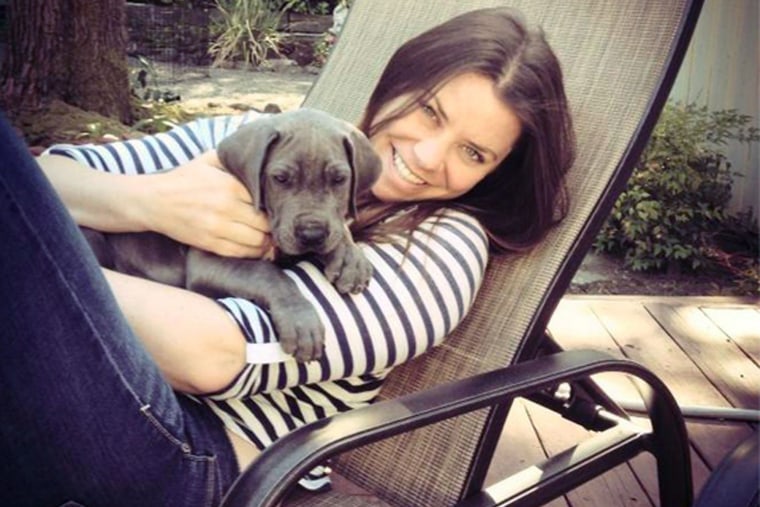This week marks the 20th anniversary of the passage of the first Death with Dignity legislation in the United States. On November 8, 1994, Oregon voters approved a ballot initiative permitting some terminally ill individuals to request and receive a prescription medication to hasten their death -- a new and untested policy idea viewed by some as a compassionate response to suffering and by others as anathema.
The 20th anniversary of Oregon’s radical approach to providing a mechanism for people to control the timing and manner of their deaths is not the reason for the current heightened level of public interest. Rather, it is the compelling and heartbreaking story of one woman, Brittany Maynard, and her public journey through her final days.
Like the media landscape today, during the early 1990s when Oregon’s new law was being formulated, the issue of Death with Dignity was featured frequently in the media: People were fixated with Jack Kevorkian who drove around America proclaiming his activities in helping people die, the Hemlock Society boasted 50,000 members, and the groundbreaking book describing a method for hastening one’s own death, "Final Exit," was at the top of many bestseller lists. Death with Dignity appeared to be the new, compelling social issue of the decade.
After the law passed in Oregon, though, public attention quickly faded. Oregonians waged war against the legal, religious and political forces trying to nullify their new law, but the nation did not appear to rally behind the effort. Aside from coverage of Jack Kevorkian’s increasingly odd antics, media attention waned.
Interestingly, though, support for the concept of Death with Dignity remained high among all Americans with the Gallup Poll showing public approval ranging from 64%-75% in the years between 1993 and 2014.
Oregon prevailed against legislative and legal challenges, culminating in a victory at the US Supreme Court in 2006. Subsequently, four other states adopted some form of Death with Dignity, either through the ballot initiative process (Washington), the state legislature (Vermont) or court decision (Montana and New Mexico).
By 2007, too, a study in the peer-reviewed Journal of Medical Ethics drew conclusions about Oregon’s law, reporting, “no evidence of heightened risk for the elderly, women, the uninsured, people with low educational status, the poor, the physically disabled or chronically ill, minors, people with psychiatric illnesses including depression, or racial or ethnic minorities, compared with background populations.” Oregon’s law had quietly moved from experimental policy to established law.
Brittany Maynard’s aggressive cancer thrust the issue back into public discourse. Her face was suddenly everywhere: on the cover of magazines, in newscasts, in social media feeds, and her story was heartbreaking. Diagnosed with an aggressive and terminal brain cancer at 29, she used Oregon’s law to end her life this month. She was forced to move her family from California to Oregon because California did not have a similar law, and people were outraged at the demands on this young family. The American public was engaged again.
Related: Death With Dignity advocate Brittany Maynard dies in Oregon
Her crusade to draw attention to the Death with Dignity movement was successful in large part because she represented everything the Death with Dignity movement lacked. She was a story, not a data point in a state-sanctioned report. She was a terminally ill patient talking about her own illness, not a physician like Jack Kevorkian. She was young and newly married, seemingly poised to launch into family life, and she looked unlike any stereotype of a dying person. She reminded all Americans young and old, without saying it directly, that death could happen to them.
She also managed to debunk myths about Death with Dignity which lingered through two decades: that the Death with Dignity process is a rush to suicide (Maynard articulated her desire to live, demonstrating in the end that her choice of timing was related to the debilitating symptoms she was experiencing and not a preconceived death wish) and those who qualify for the law are isolated, single, and depressed (she was none of those things).
As the next legislative session begins in January, Death with Dignity policy reform discussions are likely in states across New England and the East Coast; New Jersey, Connecticut, Massachusetts, and New Hampshire all appear poised to initiate a Death with Dignity policy reform agenda, as they have done in the recent past. Similarly, there is talk about legislative proposals in California and Nevada. With the newly-engaged public, it seems likely that many new states will finally offer the Death with Dignity option to terminally ill individuals.
Peg Sandeen, PhD, MSW, is the executive director of the Death with Dignity National Center and an instructor at Portland State University School of Social Work.
